visionOS is the operating system for Apple’s first spatial computer, Vision Pro, which was unveiled during the WWDC 2023 keynote. While it was first rumored to be called xrOS—it was even named that way internally—Apple decided on this other brand, probably for marketing purposes. Here’s everything you need to know about it.
- BGR has a guide highlighting all the rumored features coming to visionOS 3 during the WWDC 2025 keynote
visionOS 1 features
As a first-generation operating system and device for mobile computing, it’s hard to distinguish between features as visionOS builds the ground for Apple’s first spatial computer and its future updates. Here are its top features, as Apple announced.
Apps live in “your space,” and there’s a new App Store
Vision Pro offers familiar apps such as Apple TV, Music, Mindfulness, Freeform, Safari, Photos, Mail, Messages, and Keynote. They are always synced with your iPhone, iPad, and Mac via iCloud.
These immersive apps can expand fully into your space, like during a Mindfulness session, where you can create a private moment of calm. With Environments, you can transform your surroundings with landscapes, letting apps grow beyond the dimensions of your room and create the perfect place to focus.
visionOS has a dedicated App Store featuring apps built for this new operating system, as well as compatible iPad and iPhone apps.
Immersive way to experience entertainment
One of the biggest selling points of Apple Vision Pro is an immersive way to experience entertainment. With Cinema Environment, you can enjoy shows and movies at the frame rate and aspect ratio the filmmaker intended with immersive Spatial Audio. It’s possible to create a screen that feels 100 feet wide to watch Apple TV Plus, other streaming services, or even play 100 Apple Arcade games.
Apple Immersive Videos, for example, will offer 180-degree 3D 8K recordings captured with Spatial Audio. Apple says new experiences are coming to Apple Vision Pro users.
Spatial Videos and Photos
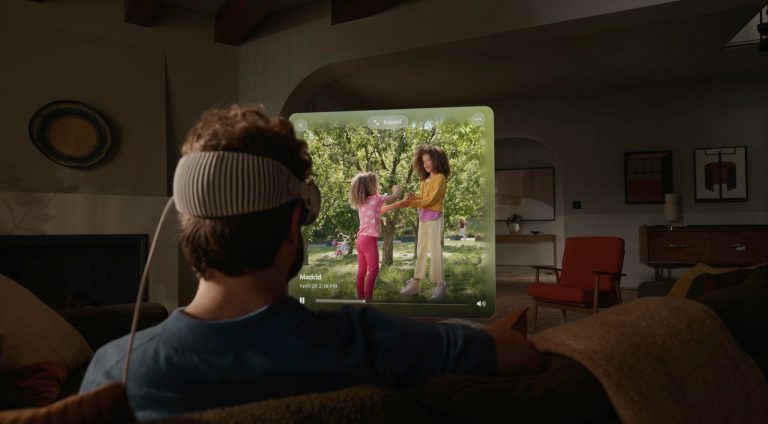
visionOS also brings a new way to visualize captured photos and videos. With the Apple Vision Pro, you can take spatial videos and photos, which offer content with impressive depth, just like if you could jump into the moment. You can find them on the Photos app and increase the size for a more immersive experience.
Starting with iOS 17.2, iPhone 15 Pro owners can shoot spatial videos to watch on Apple Vision Pro. You can learn more about iOS 17 here.
FaceTime, Personas, and collaboration
FaceTime videos are life-size, and as new people join, the call simply expands in your room with visionOS. Within FaceTime, you can use apps to collaborate with colleagues on the same documents simultaneously.
For those wearing the Apple Vision Pro, the device creates a digital Persona that allows others to see you while you’re wearing Apple’s gadget in a “dynamic, natural representation of your face and hand movements.” Users can even take advantage of SharePlay, so you continue to see everyone in large video tiles while sharing an app.
With visionOS 1.1, Apple introduced Spatial Personas, which provide a seamless experience when talking with other friends using an Apple Vision Pro. Up to four people can join this spatial conversation while enjoying SharePlay experiences.
Mac integration with visionOS
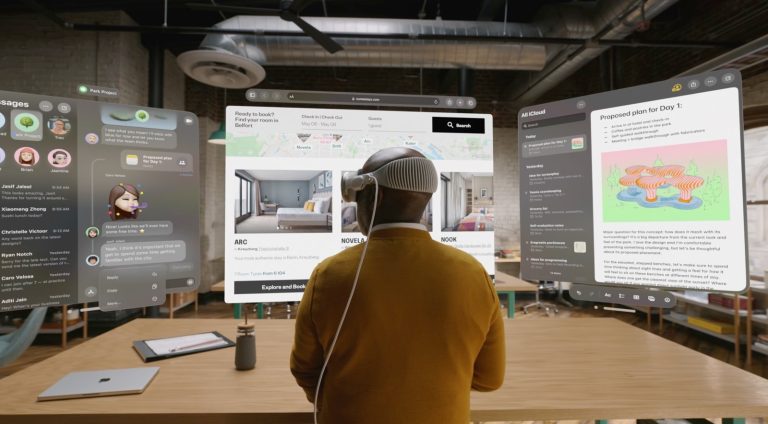
The Mac will play an important role with visionOS and the Apple Vision Pro. These are two ways Mac computers will integrate with the new operating system:
- Bring your Mac wirelessly into Vision Pro with Mac Virtual Display. You can place it anywhere in space and use Vision Pro as an enormous, private, portable 4K display
- You can use the Magic Keyboard and Magic Trackpad as Bluetooth accessories of the Vision Pro.
First third-party apps to show visionOS potential
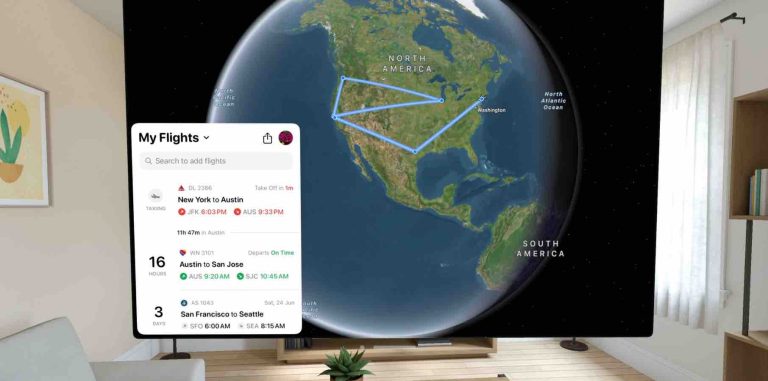
These are some of the Apple Vision Pro apps you should take a look at:
The Task app: Developer Mustafa Yusuf said on Twitter he felt like a “god,” as the first version of the Task App for Vision Pro got no errors as he built the first version for Vision Pro.
Flighty: As the name implies, Flighy lets you track flights on iPhone and iPad. The developers have already created a version of Vision Pro you can check it here.
Planny: Writing about Planny, developer Kevin Reutter said a lot of work is still needed. But this is the first version of the app for visionOS.
Mercury: If you want to see what a weather app would look like on the Vision Pro, the Mercury devs are here to help. Unlike the previous visionOS app screenshots, we have a video this time. It shows the Vision Pro apps are more than iPad/iPhone apps layered on top of the real world.
BGR‘s Chris Smith compiled a few other developers’ apps for Apple Vision Pro, although he also believes eight other apps should be available with this platform.
Apple Vision Pro app strategy
Apple takes three approaches with visionOS apps:
- Unaltered iPhone and iPad apps, which will run on Apple Vision Pro. This already works with iOS apps running on macOS with Apple Silicon. That said, developers and even Apple can release iPhone and iPad apps for this operating system without tweaking how they look;
- Developers can choose to convert their iPad apps to run as native visionOS apps, requiring them to tweak the user’s interface and bring a mixed-reality experience;
- Finally, they can build their own apps from the ground up to work on Apple Vision Pro. While this is very beneficial for the final user, it takes a lot for developers to create applications that will be controlled using eyes and hands.
visionOS 1.1 features
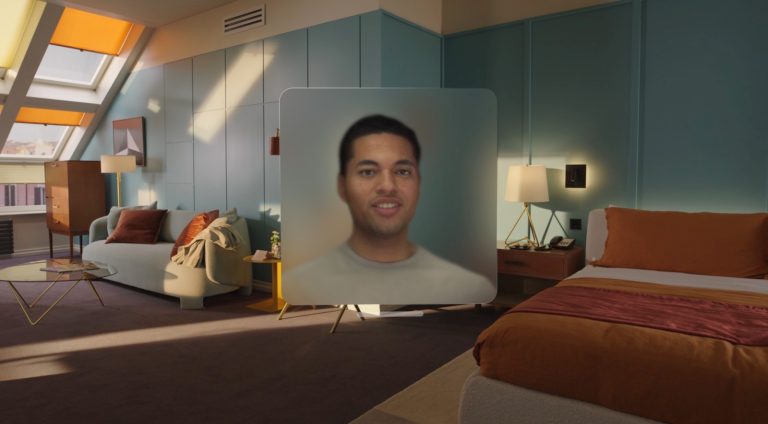
On March 7, 2024, Apple released visionOS 1.1, its first major update after Apple Vision Pro launched in the US. Here are its top features:
- Mobile Device Management: Enables account-driven device and user enrollment using Managed Apple ID, support for device configuration, deploying apps, and remote erase
- Messages: Adds support for iMessage Contact Key Verification
- Accessibility: Closed captions can be anchored to the playback control while viewing Apple Immersive Video
- Persona and EyeSight: Adds an option to enroll your Persona hands-free improve hair and makeup appearance, neck and mouth representation, and rendering of the eyes for EyeSight
- Virtual Keyboard: Cusros positioning for text input is now more accurate, resolves some issues with virtual keyboard placement obscuring the text input field, and more.
- Mac Virtual Display: Improves the reliability of discovering and connecting to a Mac, fixes an issue with universal Control, and addresses a connectivity bug that occurs when a previously paired Bluetooth device cannot be found
- Captive Network Support: Ability to set up your device while using a captive Wi-Fi network such as those found at hotels, cafes, and airports.
visionOS 1.2 features
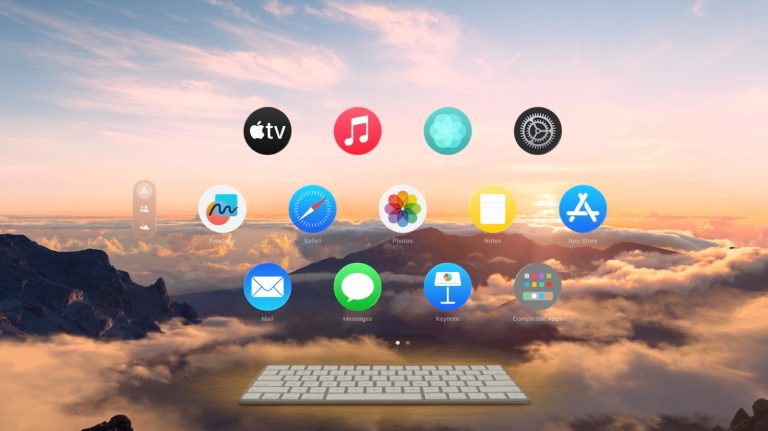
On June 10, 2024, Apple released visionOS 1.2. These are the top features:
- Mobile Device Management: Enables account-driven device and user enrollment using Managed Apple IDs, support for device configuration (Wi-Fi, VPN, email accounts, single sign-on, and more), and support for remote erase via MDM and device inventory data;
- Messages: Adds support for iMessage Contact Key Verification
- Accessibility: Closed captions can be anchored to the playback control while viewing Apple Immersive Video
- Persona (beta) and EyeSight: Adds an option to enroll your Persona hand-free, improves hair and makeup appearance, neck and mouth representation, and rendering of the eyes for EyeSight
- Virtual Keyboard: Cursor positioning for text input is more accurate
- Mac Virtual Display: Improves reliability to discover and connect to a Mac using Mac Virtual Display
- Captive Network Support: Ability to set up your device while using a captive W-iFi network such as those found at hotels, cafes, and airports
visionOS 1.3 features
On July 29, 2024, Apple released visionOS 1.3. However, as it prepares its upcoming 2.0 update, no new features are available for this version.
Apple says it brings bug fixes and security improvements.
visionOS 2.0 features

During the WWDC 2024 keynote, Apple previewed visionOS 2.0. These features have been available since September 16:
- Spatial photos: With visionOS 2, users can revisit past memories by creating spatial photos directly from their library in the Photos app.
- New hand gestures: visionOS 2 makes navigating Apple Vision Pro faster and easier for users to access key functions with new hand gestures to get to frequently used features like Home View and Control Center. New gestures allow users to see important information at a glance, like the current time and battery level, and perform actions like adjusting the volume.
- Home View: Users can now personalize their Home View by rearranging apps and placing them wherever they want, including their compatible iPhone and iPad apps
- Travel Mode for Trains: Travelers can experience their favorite apps on the go, even on trains
- Guest user: For those moments when a user wants to share their Vision Pro, a family member or colleague can be added as a Guest User and have their eye and hand data saved for 30 days.
- The Apple TV app brings support for multiview to Apple Vision Pro for the ultimate sports-viewing experience. Later this year, fans will be able to watch up to five simultaneous streams so they can keep track of all their favorite sports and teams.
- To help users achieve calm and focus, the Mindfulness app includes a new capability called Follow Your Breathing that presents dynamic visual animations and sounds that respond to the user’s breathing patterns.
visionOS 2.1 features
On October 28, Apple released visionOS 2.1. This software update only offers security patches and bug fixes. According to the company, visionOS 2.1 fixe these issues:
- Apple Music songs and music videos may fail to play
- Any project that utilizes Swift Charts fails to build when targeting iOS, macOS, or visionOS
- In StoreKit Testing in Xcode, the offer identifier in the subscription renewal info might be reported incorrectly for offer codes.
- Users are unable to rename a voice memo while recording.
visionOS 2.2 features
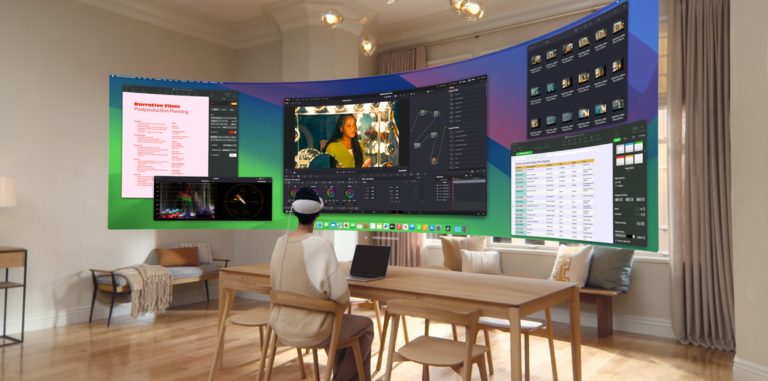
On December 11, Apple released visionOS 2.2. This is what you should know about it:
- Mac Virtual Display: It will feature a higher resolution and larger size, creating an ultra-wide display equivalent to two 4K monitors side by side; here’s how it works
visionOS 2.3 features
Apple released visionOS 2.3 on January 27, 2025. However, besides bug fixes and security improvements, there are no new features.
visionOS 2.4 features

On March 31, 2025, Apple released visionOS 2.4. This is one of the most packed updates for visionOS as it brings Apple Intelligence support for Apple Vision Pro.
These are some of the features available with visionOS 2.4:
- Writing Tools: Users can rewrite, proofread, and summarize text nearly everywhere they write, including Mail, Notes, Pages, and third-party apps;
- Image Playground: Users can create playful images in seconds, choosing from Animation, Illustration, or Sketch. This app is built right into apps like Messages and is also available in a dedicated app;
- Memories in Photos: Users can create stories they want to see just by typing a description. Apple Intelligence will pick out the best photos and videos based on the description, craft a storyline with chapters based on themes identified from the photos, and arrange them into a movie with its own narrative arc;
- Clean Up tool: This Photos app feature can identify and remove distracting objects in the background of a photo without accidentally altering the subject;
- Siri: Users type to Siri and switch between text and voice to communicate with Siri in whatever way feels right for the moment.
- ChatGPT integration: When you feel Apple Intelligence isn’t enough, you can allow ChatGPT to access Writing Tools and other features for a better response.
In addition to Apple Intelligence, visionOS 2.4 introduces Spatial Gallery, an app that features spatial photos, videos, and panoramas curated by Apple for Vision Pro. There’s also a new Apple Vision Pro app for iPhone that users can take advantage of to queue apps and games to download, discover new content, and more. Guest User has also been revamped so Apple Vision Pro owners can customize everything from their iPhone or iPad.
visionOS 2.5 beta features
Apple is working to release visionOS 2.5 by mid-May. However, it seems this will be another light on features update.
visionOS 2.0 confirmed features before WWDC 2024

Before WWDC 2024 takes place, Apple confirmed a few upcoming visionOS 2.0 features, including:
Live Captions to help everyone — including users who are deaf or hard of hearing — follow along with spoken dialogue in live conversations and in audio from apps. With Live Captions for FaceTime in visionOS, more users can easily enjoy the unique experience of connecting and collaborating using their Persona.
Apple Vision Pro will add the capability to move captions using the window bar during Apple Immersive Video, as well as support for additional Made for iPhone hearing devices and cochlear hearing processors.
Updates for vision accessibility will include the addition of Reduce Transparency, Smart Invert, and Dim Flashing Lights for users with low vision or those who want to avoid bright lights and frequent flashing.
How to download the visionOS beta?
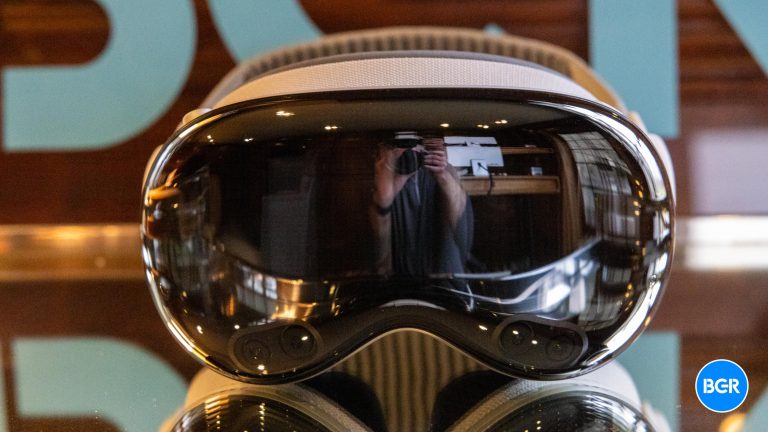
On June 21, 2023, Apple released the first beta of visionOS. On its developer page, the company offers the SDK of this platform alongside some tips on how to create apps for Vision Pro. As expected, visionOS relies on SwiftUI, RealityKit, ARKit, and Accessibility. Developers must use Xcode, Reality Composer Pro, and Unity to bring new apps to life.
With the visionOS 2 beta available for developers since mid-June 2024, Apple tells users that it won’t offer a public beta of this upcoming software update and that they need to wait until the official version is released later this fall.
Release date
visionOS is available alongside Apple Vision Pro. Although Apple never released a 1.0 version of this system, the company offered 1.0.1 to reviewers of this device. Currently, the most recent operating system update for this product is visionOS 2.2.
visionOS 2 was released on September 16, following the announcement of the iPhone 16 event.
visionOS compatibility
visionOS is compatible with the Apple Vision Pro, the company’s first spatial computer. BGR will update the list as Apple announces new products over the years.







